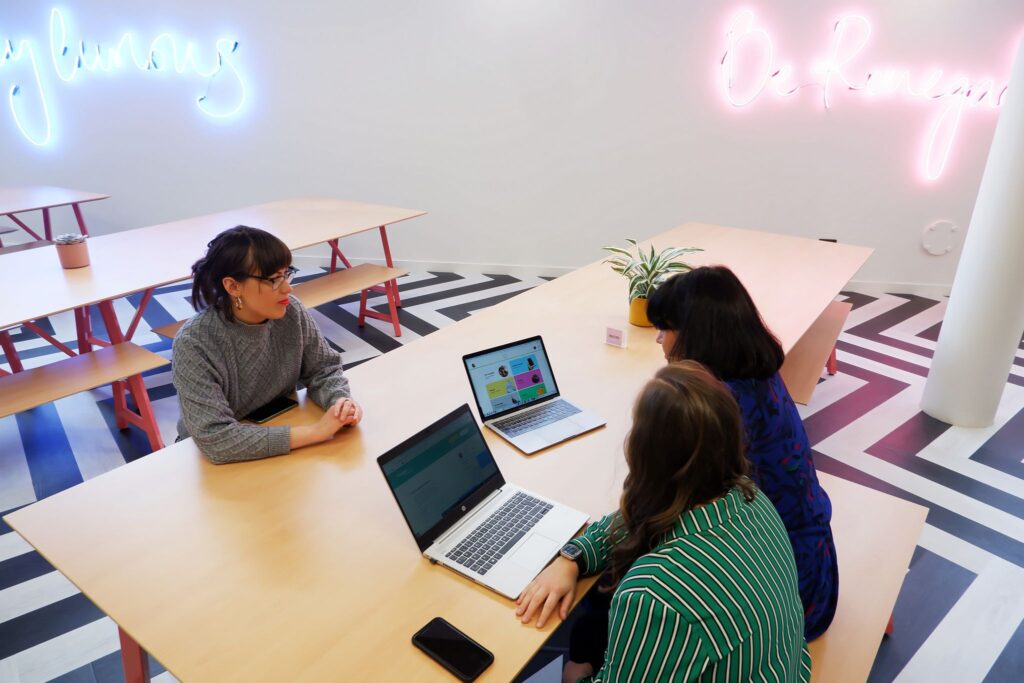Graphic design is not just creating an image from some shapes and throwing them onto a page, or changing the font of the name of a company. A way to make your designs stand out is beginning from the ground up, taking into account who or what the message is or aim is.
This is how I approach my work, a concept-driven process, and I believe it’s a great way to make yourself stand out against the sea of new designers. This holistic approach is also incredibly beneficial for getting from brief to design, for both you and the client.
It’s perhaps the hardest point of the process, when you sit down to that blank piece of paper or a white computer screen, when you think how the hell you’re going to think of something to put on that blank white. However, this process helps to not only get you started, but also to ensure that you are creating the best possible work for your brief.
I’ve broken down my concept-driven process into a 8 step strategy, which I employ when I’m approached with a brief:
- The Brief. Who, what, where. What is the business, the message, the target audience, and what are the specifications? Usually, I have an initial chat with the client, execute some scoping, and then go back and get clarity. Many clients do not know sometimes what they are asking for, so it’s important that I ask the right questions
- Market Research. After the brief is received, then it’s time for me to research as much as possible – whether that’s of what the client has so far done such as their previous designs, or of their main competitors’ previous and current work. The more research the better, but I try not to get distracted by things that are a little bit too irrelevant!
- Moodboarding. As I collect the market research, I ensure I’m saving similar work, posts, campaigns etc. that are visual examples of which direction my work could take the client to. These can be used to determine so much of a project – the colour palette, the typography, the possible assets. They’re the perfect way to make important decisions about a project before starting the actual design.’ These are a great reference for understanding more what the client likes, or hates, and how I’m going to approach their design.
- Brainstorming. Next, I use my research and moodboarding to start to brainstorm what I am going to design. This is also an opportunity for me to present to the client my vision for a holistic approach, perhaps further than what they first asked me for. By having looked at the brand as a whole, I am able to present ideas they had not thought of, such as ways of redesigning their logo that is sleeker, more modern, and more relevant.
- Idea Gathering, or rather, scaling up ideas, where I sketch out how these ideas would look. This is also really relevant if what I’m focusing on is content creation, for instance, it’s so helpful to sketch out an Instagram post – with what style of photo, how many photos, or what copy. Humans, whether creative or not, are very visual, so this is really helpful to both you and for the client to understand what direction you’re taking the brief.
- Concept development. Now it will be much clearer what works for my concept or not – and it’s time to apply that to the client. This is when I ensure I am sticking to the specifications I’ve been given, whilst also trying to create something new and different in the market.
- Feedback from the client. Whilst it can sometimes be difficult in the world of design, as we all know, client is king. In a presentation, I make an effort to ensure that everything has a visual aid and be talked through, otherwise, the client might be left behind and not on board, even if I believe I might have a great idea. I also keep in mind that the client knows their customers best, and may think of something I may have overlooked.
Take whatever feedback or constructive criticism you’ve gotten and apply it – some clients might require repeating the last few steps until approved. - Final delivery. Once the client is happy with every detail, it’s time to package it all up.

Following this process, I’ve created well-crafted individual packages and campaigns for different clients and briefs. If you’re someone who has a strong attention to detail, this is a great way to structure your thinking and approach, allowing you to focus on the details whilst moving the process along. Above all, it can genuinely make the process a little more fun. As you grow more used to the concept-driven strategy, it also becomes easier to just do it like second nature.
A concept-driven process is how the best designers approach their design briefs, and ensures the tone and message of the client are portrayed how they would wish it to be. Basing design work on a roots up approach means that the designs or logos have true meaning and care behind their creation, making the work more meaningful, likeable and impactful.
I’m Rebecca, a graphic designer and digital creative, helping different clients with their online and social marketing strategies. This concept-driven design process allows me to create impactful and meaningful assets for clients, as part of larger campaigns which hone in on their USPs and what makes them worth picking. Every business or designer has an edge, it’s just about finding it.



